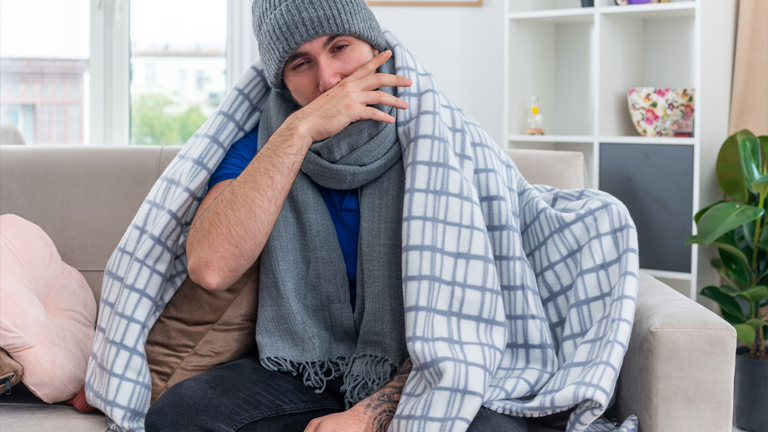The common cold is a viral infection affecting the upper respiratory tract, including the nose, throat, and sinuses. While usually mild, cold symptoms can be uncomfortable and disruptive. Understanding the causes, symptoms, and best remedies can help you recover faster and prevent future infections.
In this comprehensive guide, we’ll explore:
- The most common cold symptoms
- The viruses responsible (primarily rhinovirus)
- How long a cold typically lasts
- The difference between a cold vs. flu
- The best home remedies and over-the-counter medications
- Prevention tips to boost your immune system
Let’s dive in!
What Is the Common Cold?
The common cold is a viral upper respiratory infection caused by several viruses, with rhinovirus being the most frequent culprit (accounting for 30-50% of cases). Other viruses, such as coronavirus, adenovirus, and respiratory syncytial virus (RSV), can also trigger cold-like symptoms.
Unlike the flu, colds are usually milder but can still cause significant discomfort, including sore throat, runny nose, nasal congestion, and coughing.
Common Cold Symptoms to Watch For
Cold symptoms typically appear 1-3 days after exposure and may include:
- Runny or stuffy nose (nasal congestion)
- Sore throat
- Sneezing
- Coughing (mild to moderate)
- Mild headache
- Fatigue (low energy)
- Watery eyes
- Low-grade fever (more common in children)
Unlike the flu, colds rarely cause high fever, severe body aches, or extreme exhaustion.
Causes of the Common Cold (Rhinovirus & More)
The common cold spreads through:
- Airborne droplets (when an infected person coughs or sneezes)
- Direct contact (shaking hands, touching surfaces)
- Contaminated objects (doorknobs, phones, keyboards)
Rhinovirus thrives in cooler temperatures, making colds more frequent in fall and winter. However, you can catch a cold any time of year.
How Long Does a Cold Last?
Most colds resolve within 7-10 days, but some symptoms (like a lingering cough) may persist for 2-3 weeks.
Cold Timeline Breakdown:
- Days 1-3: Sore throat, sneezing, runny nose
- Days 4-6: Nasal congestion, mild cough
- Days 7-10: Symptoms gradually improve
If symptoms worsen or last longer, it could indicate a secondary infection (like sinusitis or bronchitis), requiring medical attention.
Cold vs. Flu: How to Tell the Difference
| Symptom | Common Cold | Flu (Influenza) |
| Onset | Gradual (1-3 days) | Sudden (within hours) |
| Fever | Rare (mild if present) | Common (often high) |
| Body Aches | Mild or none | Severe |
| Fatigue | Mild | Extreme exhaustion |
| Cough | Mild to moderate | Can be severe |
| Complications | Rare | Pneumonia, hospitalization |
If you experience high fever, severe body aches, or difficulty breathing, consult a doctor—it might be the flu.
Best Home Remedies for Fast Relief
While there’s no cure for the common cold, these home remedies can help ease symptoms:
1. Stay Hydrated Common Cold
- Drink warm water, herbal teas, or broth to loosen mucus and soothe a sore throat.
2. Honey for Cough Relief Common Cold
- A spoonful of raw honey can suppress coughing (avoid for children under 1).
3. Saltwater Gargle
- Mix ½ tsp salt in warm water and gargle to relieve throat irritation.
4. Steam Inhalation
- Inhale steam from a bowl of hot water (with a towel over your head) to clear nasal congestion.
5. Zinc for Colds
- Zinc lozenges (taken within 24 hours of symptoms) may shorten cold duration.
6. Vitamin C Boost
- While not a cure, vitamin C-rich foods (oranges, bell peppers) may support immunity.
7. Rest & Sleep
- Your body heals faster when well-rested—prioritize sleep!
Over-the-Counter Medications That Help
For additional relief, consider:
- Decongestants (pseudoephedrine) – Reduce nasal swelling
- Antihistamines (diphenhydramine) – Help with sneezing/runny nose
- Pain Relievers (ibuprofen, acetaminophen) – Ease headaches/sore throat
- Cough Syrups (dextromethorphan) – Suppress coughing
Note: Avoid giving aspirin to children (risk of Reye’s syndrome).
How to Prevent Catching a Cold
Prevention is key! Follow these cold prevention tips:
✔ Wash hands frequently (20 seconds with soap)
✔ Avoid touching your face (eyes, nose, mouth)
✔ Disinfect high-touch surfaces (phones, doorknobs)
✔ Boost immunity with a balanced diet, exercise, and sleep
✔ Stay away from sick people (when possible)
When to See a Doctor for a Cold
Most colds resolve on their own, but seek medical help if you experience:
- High fever (over 101°F / 38.3°C)
- Difficulty breathing or chest pain
- Severe sinus pain or headache
- Symptoms lasting longer than 10 days
These could indicate bacterial infections requiring antibiotics.
Myths and Facts About the Common Cold
Myth: Antibiotics cure colds.
Fact: Colds are viral—antibiotics only work against bacteria.
Myth: Going outside with wet hair causes colds.
Fact: Only viruses cause colds—not cold weather.
Myth: Vitamin C prevents all colds.
Fact: It may help reduce severity, but it’s not a cure.
Final Thoughts Common Cold
The common cold is a nuisance, but with the right home remedies, OTC meds, and prevention strategies, you can recover faster and stay healthy. Remember:
- Rest and hydration are crucial
- Zinc and vitamin C may help shorten symptoms
- Wash hands often to prevent spreading germs
If symptoms persist or worsen, consult a healthcare provider. Stay healthy!
Did you find this guide helpful? Share it to help others beat the cold faster!

